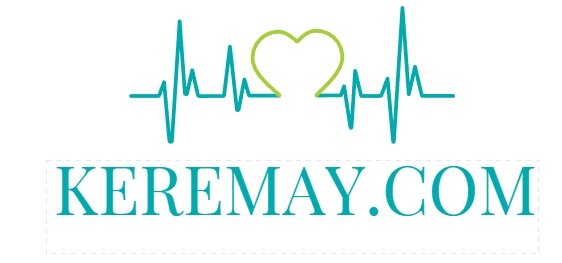In today’s world, health issues have become a global concern. People of all backgrounds and locations run the risk of being impacted by illnesses that can range from the common cold to the most stubborn of diseases. For this reason, it’s encouraging to see people coming together to form community health initiatives, in order to combat these issues on a local level. Through collective efforts, communities are working together to promote wellness, and are improving the health outcomes of all individuals involved. This article examines community health initiatives, and the importance of their collective efforts for disease prevention.
1.Harnessing the Power of Collective Action: Community Health Initiatives
Collective action is essential for community health initiatives to be successful. When members of a community come together to collectively identify and work towards improvement, resources can be marshaled effectively, and positive outcomes become attainable. Here are some benefits of harnessing the power of collective action in pursuit of community health initiatives:
- Strengthened Connections: Community members come together and are able to work towards a shared goal. This creates more meaningful connections between the members, which can increase trust, mutual understanding, and collaboration, all of which are necessary for making meaningful impacts in the community.
- Improved Allocation of Resources: By pooling resources from individuals, businesses, and local government, collective action can ensure that the necessary funds and resources are available to develop health initiatives and programs.
- Lasting Change: By engaging the efforts of multiple stakeholders, collective action allows for initiatives to become sustainable, converting short-term goals into lasting successes.
However, harnessing the power of collective action will require careful coordination and strategy. The initiative must be carefully planned, and stakeholders must be identified beforehand. All involved in the initiative must be committed to the cause and willing to cooperate. Establishing a central coordinating body can help ensure that all stakeholders remain on the same page, and the initiative should be continually monitored and evaluated for effectiveness.
Though challenging, harnessing the power of collective action can be a highly effective way to develop successful community health initiatives. By pooling the resources and creating meaningful connections between members of the community, collective action can be a powerful tool for creating positive change.
2.The Benefits of Collaborative Health Care Strategies
Providing collaborative healthcare involves interdisciplinary teams which work together to help promote patient health and wellbeing. It provides a range of advantages and benefits, ensuring that everyone gains something from the process.
The first benefit of integrated healthcare delivery is enhanced patient coordination. This implies that medical experts, from family doctors to specialists, are able to communicate seamlessly and ensure that every treatment plan takes into account the wishes and needs of the patient. Being able to provide the right level of care at the right time reduces unnecessary readmissions and hospital stays, thus improving the overall outcome of any treatment.
With collaborative strategies, providers are also able to benefit from improved workflow, patient throughput, and decreased time spent on paperwork. Smoother collaboration between departments results in higher care quality, reducing patient cancellations and no-shows. Furthermore, such strategies can reduce waste, ensuring that fewer supplies are wasted and that the best interventions are used to treat any condition.
Collaborative strategies also have some distinct financial benefits. Care providers are able to pool resources to maximize efficiency, reduce costs, and improve the quality of care while maintaining affordability. Care teams can also take advantage of certain insurance plans that offer discounts for collaborative care, allowing them to provide more benefits to more patients.
Such strategies also bring greater levels of staff satisfaction. Increased teamwork, communication, and respect between disciplines have been proven to improve employee morale, enabling them to better focus on delivering the highest quality of care to patients.
3.Exploring Disease Prevention Through Community Engagement
The link between community engagement and disease prevention is an important one, yet often overlooked. Community engagement is a powerful tool that can be used to create meaningful change and help reduce the spread of infectious diseases.
Involving the local community in disease prevention initiatives can have a long-lasting impact and can help to create sustainable initiatives that have a lasting positive effect. To ensure success, these initiatives should be tailored to address the specific needs of the community and adapted as the needs of the community change.
Here are a few strategies for :
- Community education – Providing information on the causes and consequences of infectious diseases can help to prevent further spread.
- Early detection – Early detection of illnesses is important in order to reduce spread and offer better care to those in need.
- Healthcare access – Improving access to healthcare can help to prevent and mitigate the spread of infectious diseases.
- Healthy behaviors – Encouraging healthy behaviors such as handwashing and proper nutrition can also help to reduce the spread of infectious diseases.
Community engagement is an essential element of disease prevention, and it is up to us to ensure that our communities have access to the knowledge and resources they need to stay healthy.
4.Making a Difference: Engaging Local Communities in Health Promotion
Local communities play a key role in driving health promotion efforts, and their engagement is a critical factor in creating sustainable, campaign-specific and long-term improvements in health outcomes. Here are four ways to engage local communities in health promotion for meaningful results.
- Partner with existing organisations: Connecting with the work that local organisations are already doing is a great way to jumpstart a health promotion campaign. Utilise resources and teams who already have strong relationships with the targeted community, and learn from them to ensure that your health promotion plans are relevant and fitting with the local context.
- Introduce initiatives: Start small and introduce initiatives that will ensure the campaign’s success and sustainability. Investing in community-wide projects, such as new facilities, youth health checks, or health-focused cook-offs, can attract larger numbers to the engagement process.
- Gather feedback: Engage meaningful conversations that involve gathering feedback of the community members, such that policies, plans and implementation details can be adjusted deliberately, quickly, and according to the needs of the locals.
- Promote accountability: Centre accountability and ownership in the process of health promotion. Doing so will build trust between the local community and health promotion efforts, while also encouraging them to take a more active role in improving their own health.
Involving communities in the health promotion process ensures that localised approaches to health and wellness can be implemented, paving the way for more effective interventions and better health outcomes.
Every health promotion effort should consider the social and cultural context that local communities are part of, utilising the knowledge of the local people and their privacy and needs to ensure that campaigns are well-received and yielding meaningful results.
When communities unite to take action for health initiatives, the rewards are far reaching and powerful. By coming together to focus on preventive practices, such as vaccinations, nutrition, and physical activity, we can make a positive and lasting difference for the health and well-being of future generations. Let’s commit to continuing these collective efforts for the sake of a healthier world.



